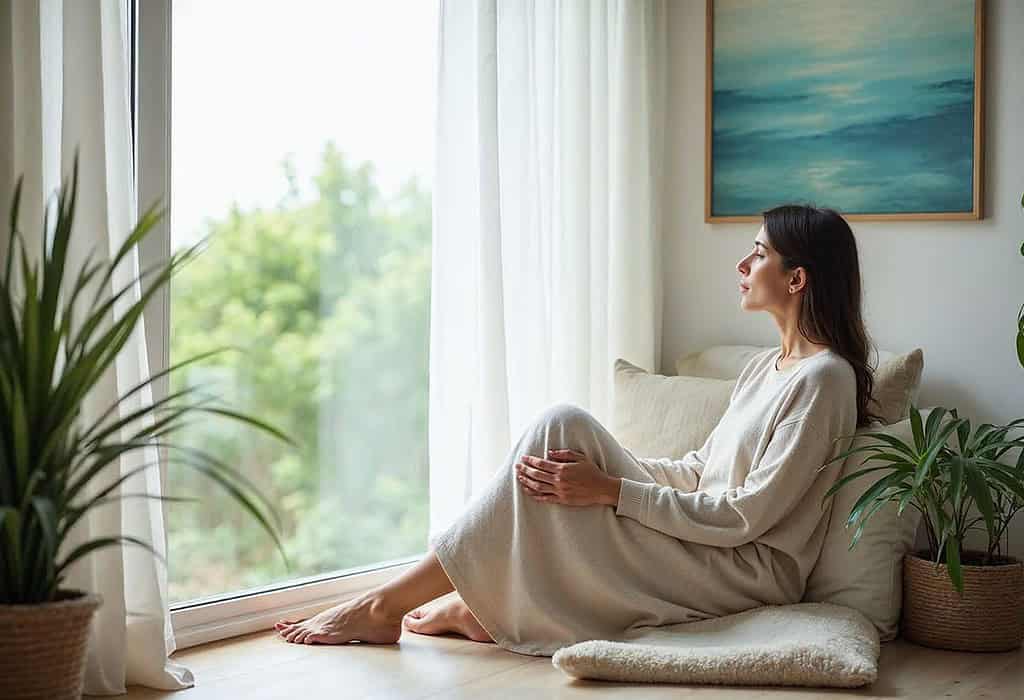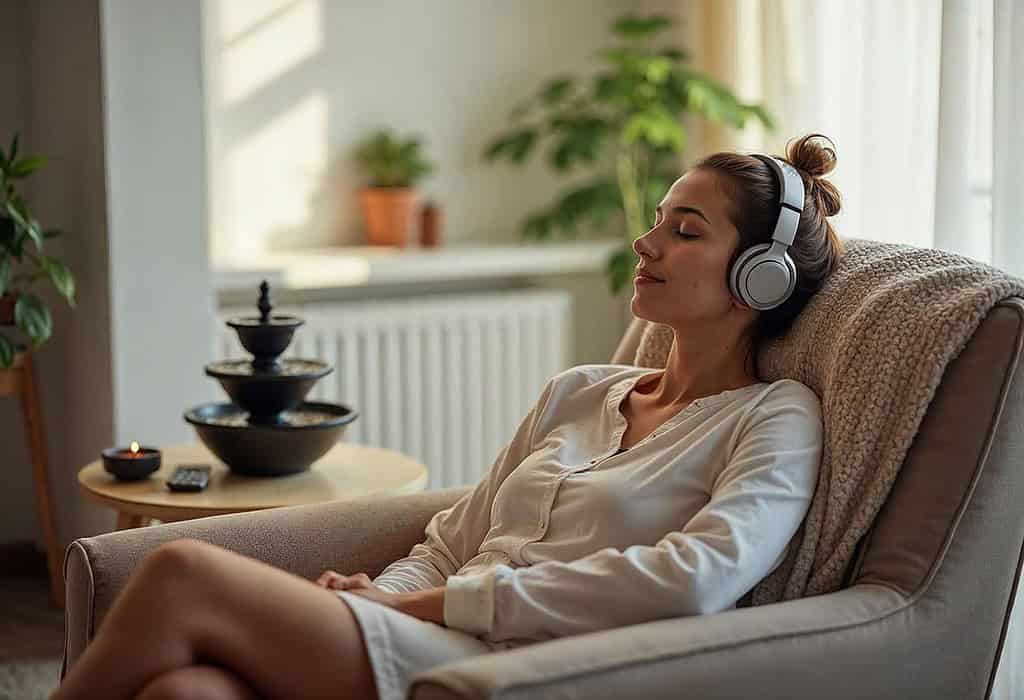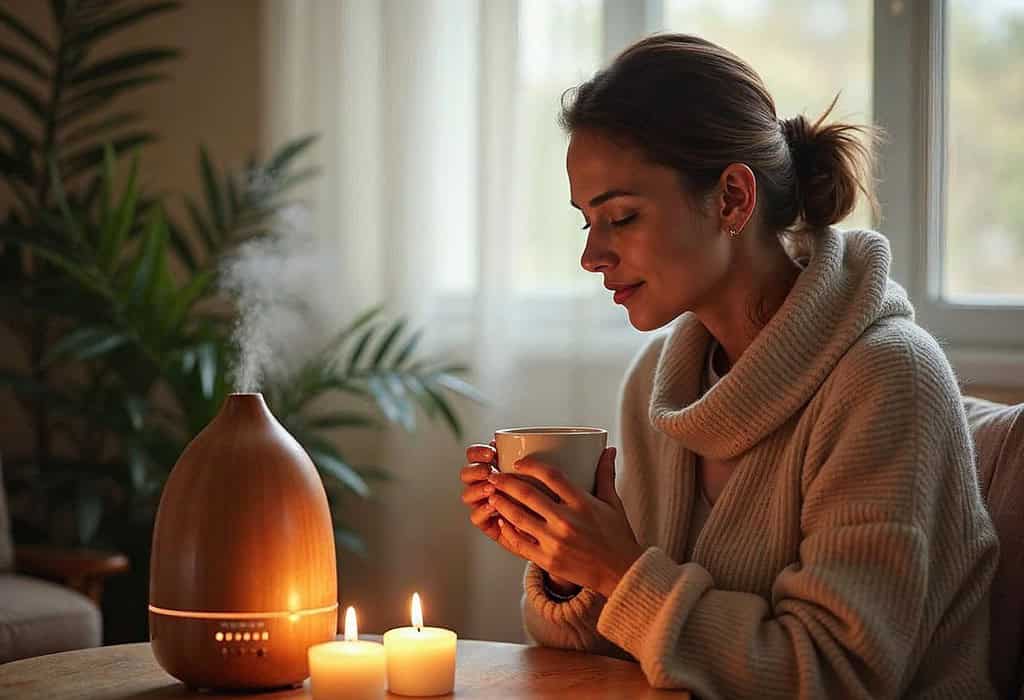Introduction
In our fast-paced world, finding effective ways to relax and unwind can be challenging. While meditation and mindfulness are popular relaxation techniques, there’s another powerful method that many people overlook: sensory exploration for relaxation.
By engaging all five senses—sight, sound, smell, taste, and touch—you can create a deeply soothing experience that grounds you in the present moment, helping to alleviate stress in a holistic way. Here’s how to use sensory relaxation to bring balance to your busy life.
Sight: Visual Serenity
What we see has a powerful effect on our mental state. Certain colors, like soft blues and greens, are known to promote calmness, while nature scenes can make us feel more grounded. Try creating a visual oasis at home.

This could be a small corner with plants, a framed nature print, or even an organized bookshelf with a color scheme that makes you feel at ease. You could also consider using soft, ambient lighting instead of harsh fluorescent lights, which can be jarring and overstimulating.
Even something as simple as changing your phone wallpaper to a peaceful landscape can contribute to a sense of calm through visual sensory relaxation.
Sound: Power of Listening
Sound is another essential element in relaxation through sensory exploration. While music is often the go-to for relaxation, it’s also worth exploring natural sounds—like rain, ocean waves, or a gentle breeze through leaves.

Experiment with playlists of binaural beats, nature sounds, or ambient music that helps you relax. Many streaming platforms have playlists for relaxation that feature gentle, consistent sounds proven to reduce stress.
Consider creating a soothing audio atmosphere at home with a small fountain, or even a sound machine, to encourage relaxation during daily routines.
Smell: Soothe the Senses
Our sense of smell has a unique link to the brain’s emotional center, making it a powerful tool for sensory relaxation. While lavender, chamomile, and sandalwood are well-known for their calming effects, you can also experiment with lesser-known scents like cedarwood, bergamot, or pine.

Essential oil diffusers, scented candles, and even fresh flowers can subtly influence your mood by adding calming scents to your environment.
For a quick relaxation boost, try a scented hand lotion or a few drops of essential oil on your wrists to carry a moment of calm with you throughout the day.
Taste: Savoring Flavor
Taste can be a delightful way to practice sensory exploration for relaxation. Certain flavors have calming properties, like dark chocolate, herbal teas, or snacks with warm spices like cardamom and cinnamon.

When you’re feeling stressed, take a few moments to savor a small piece of chocolate or enjoy a soothing cup of chamomile tea.
By truly focusing on the taste and texture, you can use taste as a grounding tool, bringing you into the present moment and helping to alleviate stress.
Touch: Tactile Calm
Touch is perhaps one of the most grounding of the senses. Cozy blankets, heated eye masks, or even a textured stress-relief ball can provide sensory comfort. Weighted blankets, for example, can help the body relax by providing gentle pressure, mimicking a comforting hug.

Even something as simple as a soft pillow or a favorite cozy sweater can bring a sense of calm. During the day, take small “touch breaks”—a few seconds to gently massage your hands or apply lotion mindfully—to reconnect with your sense of touch and help ease tension.
Creating a Sensory Relaxation Routine
The beauty of sensory relaxation is that it can be incorporated into your day in small, meaningful ways. To create a sensory routine, start by choosing one or two senses you feel most drawn to.
For example, you might begin with sound and scent, creating a relaxing space with ambient music and calming essential oils. Gradually add other senses until you have a multi-sensory experience that suits your preferences.
By making sensory exploration part of your routine, you’ll find it easier to tap into relaxation during moments of stress.
Conclusion
Relaxation through sensory exploration offers a holistic way to destress by grounding you in the present and fully engaging all five senses. Unlike traditional methods that might rely on a single technique, sensory relaxation is accessible to everyone, allowing for small yet effective moments of calm throughout your day.
By gradually incorporating sight, sound, smell, taste, and touch into your relaxation practices, you’ll be able to create a personalized relaxation routine that can transform how you handle stress.
So next time you’re feeling overwhelmed, pause and consider which of your senses can bring you back to a state of calm. After all, the key to deep relaxation might just be a sensory experience away.
“This post is only skimming the surface of sensory relaxation. Stay tuned, as we plan to feature more in-depth exploration of this powerful relaxation approach in future posts.”

